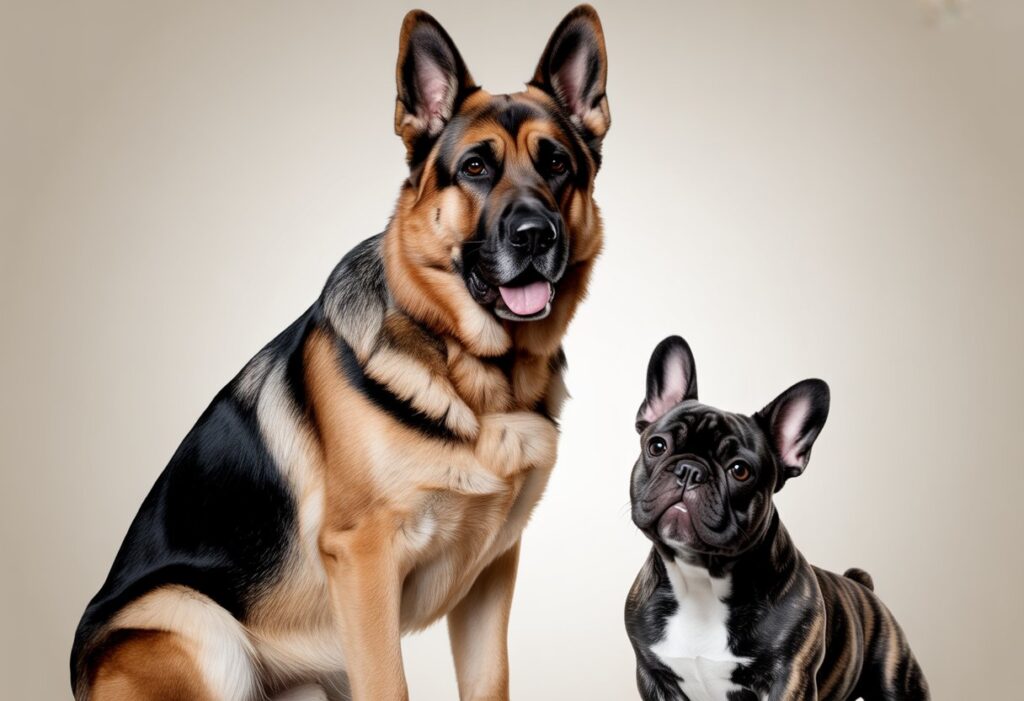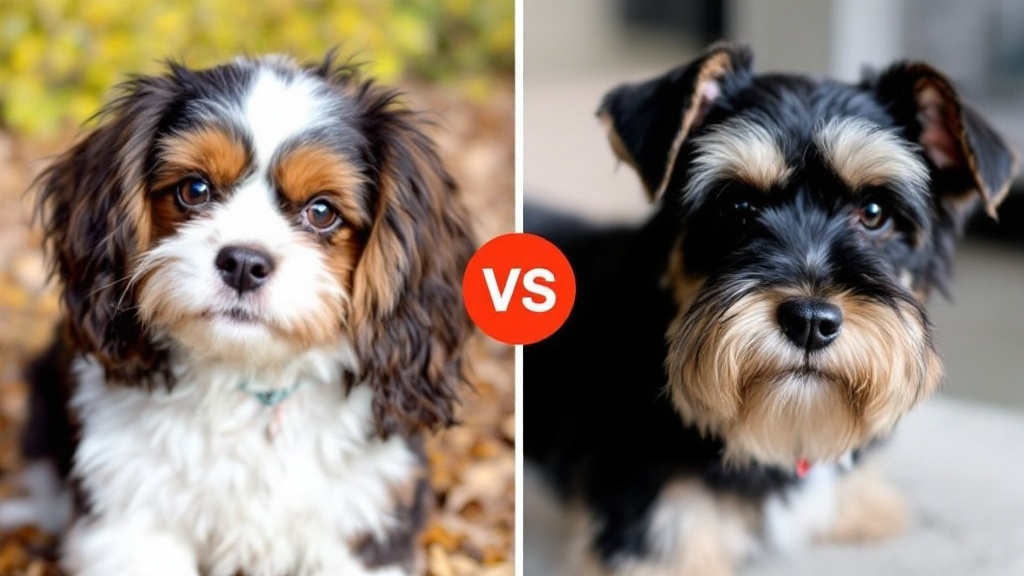If you’re torn between a German Shepherd and a French Bulldog, you’re comparing two purebred dogs that couldn’t be more different in personality, size, and lifestyle. German Shepherds are bigger, more active, and often work as guard dogs. French Bulldogs, on the other hand, are smaller, friendlier, and fit right in with families or people living in apartments.
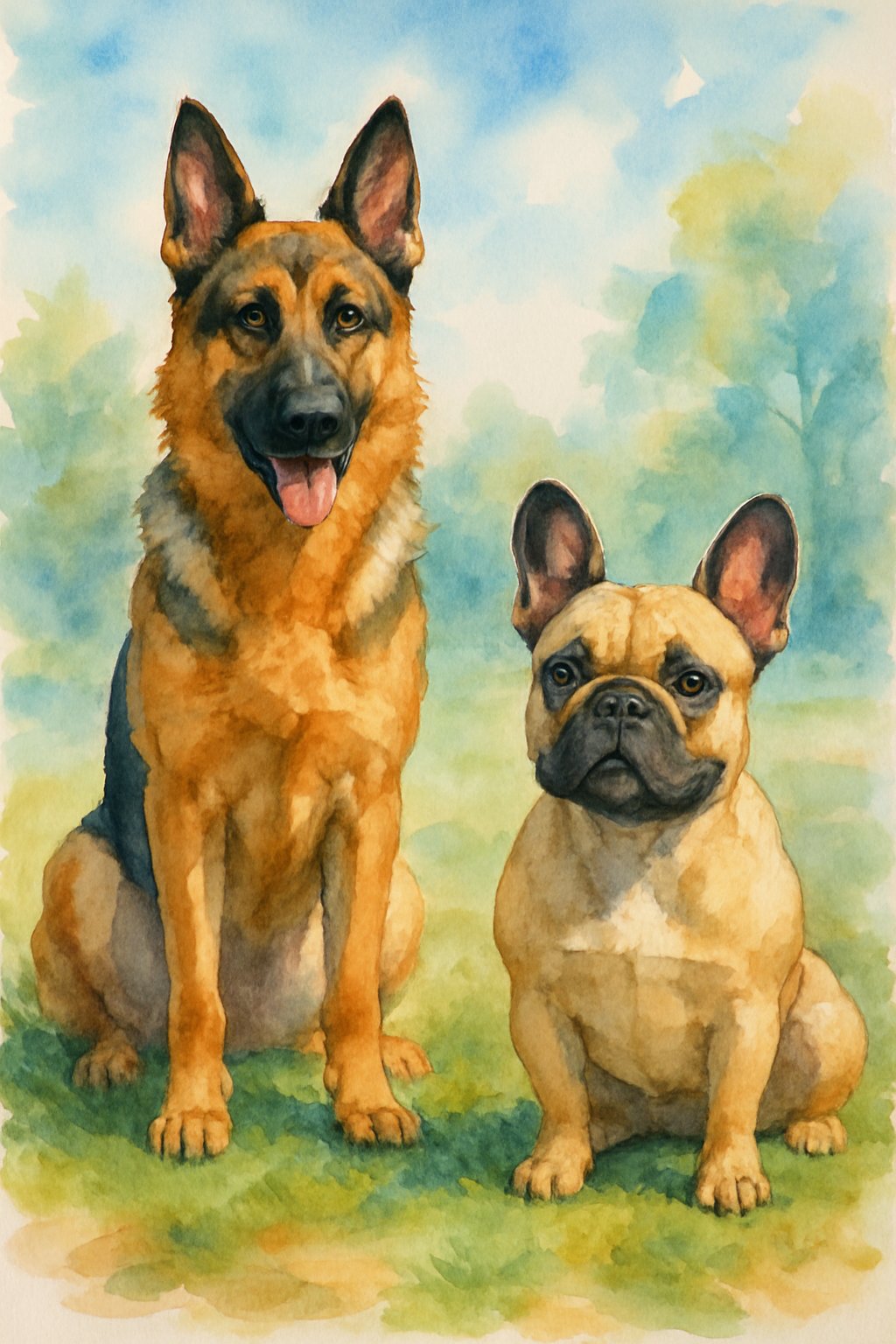
Knowing what sets these breeds apart will help you figure out which one fits your life. You’ll get a sense of their temperaments, how much exercise they crave, and how trainable they really are.
Let’s break down the details so you can see which dog might fit your needs and your family’s vibe.
Breed Origins and History
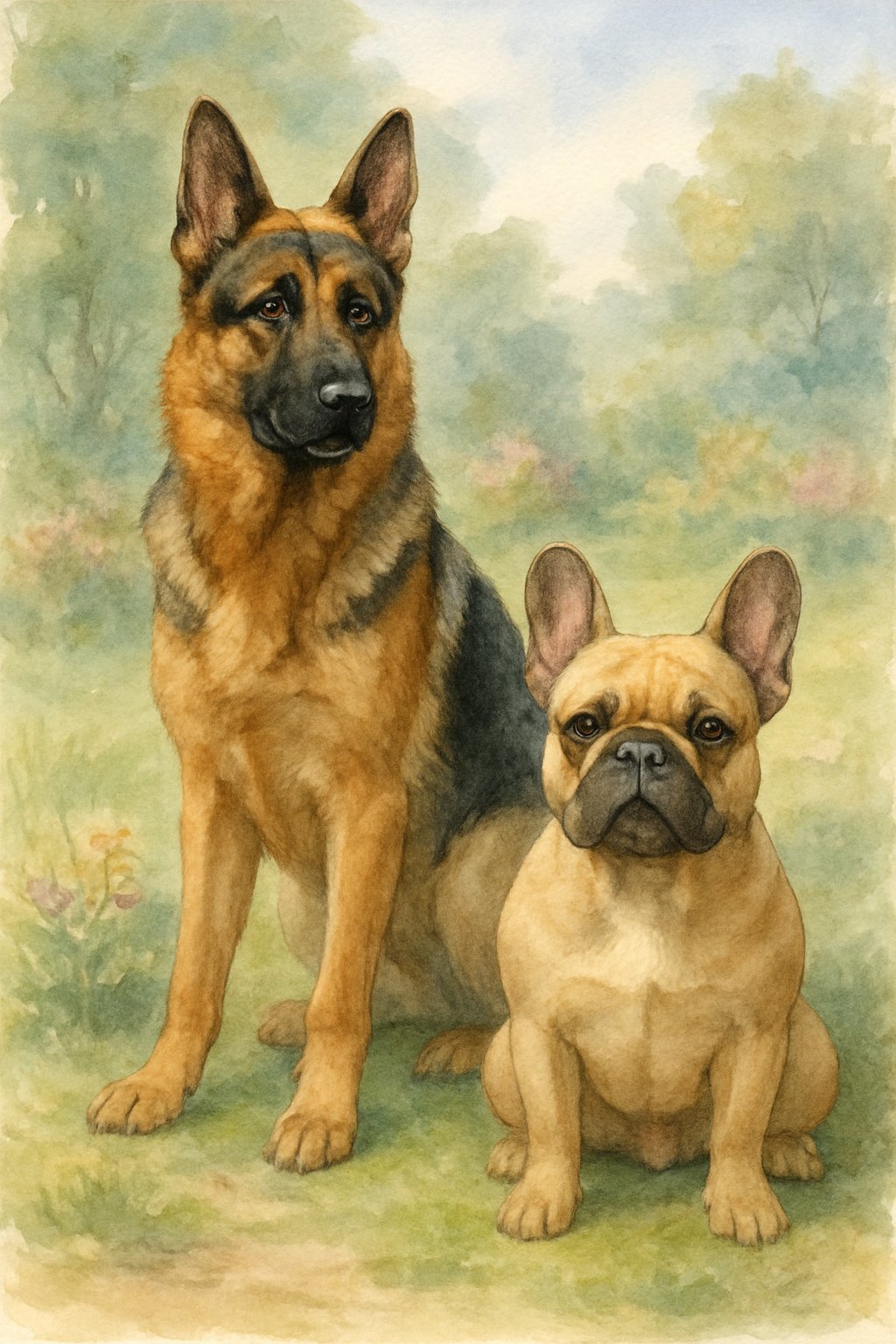
Each breed’s background shaped how they look and act today. Their stories are pretty different, and honestly, that’s what makes the comparison interesting.
Origin of the German Shepherd
The German Shepherd hails from Germany and dates back to the late 1800s. Max von Stephanitz, a former cavalry officer, created the breed because he wanted a smart, loyal, and hardworking herding dog.
People quickly noticed their intelligence and strength. Over time, German Shepherds shifted into roles with the police, military, and service work.
The American Kennel Club (AKC) recognized the breed in 1908. Today, German Shepherds have a reputation for being loyal, alert, and protective.
Origins of the French Bulldog
French Bulldogs got their start in England as smaller Bulldogs that lace makers kept as companions. When workers moved to France in the 1800s, they brought their dogs along, and the breed developed its signature bat-like ears and compact body.
The French Bulldog quickly caught on with city folks in Paris. The AKC recognized them in 1898. People fell for their friendly, easygoing personalities and their small size.
Unlike German Shepherds, French Bulldogs were bred just to be companions. They’ve got a playful spirit and a loving vibe, making them a good fit for apartments or small homes.
Development as Popular Dog Breeds
Both breeds found fame around the world, but for totally different reasons. German Shepherds became famous for their work ethic. Police and rescue teams trust them for their brains and trainability.
French Bulldogs became trendy city pets. Their size and laid-back personalities made them a hit with celebrities and urban families. They’re regulars on lists of America’s most popular breeds.
The American Kennel Club set breed standards for both in the early 20th century. Over the decades, each breed’s traits shaped how they’re bred and enjoyed as pets.
Physical Characteristics
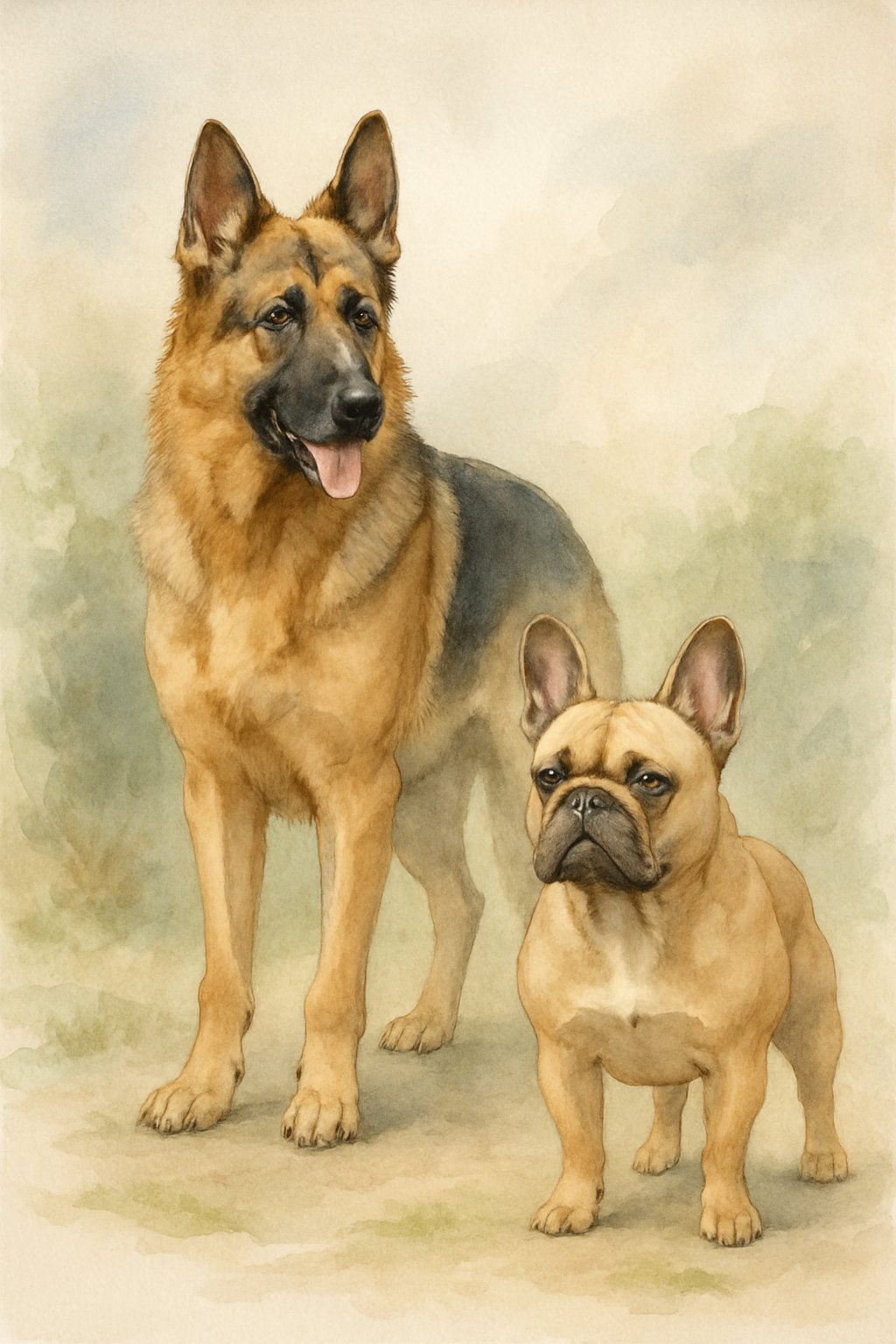
German Shepherds and French Bulldogs look nothing alike. Their body shapes, coat colors, and breed standards fit different lifestyles.
Size and Weight Differences
The German Shepherd is a large, athletic dog. Adult males usually weigh 65–90 pounds and stand 24–26 inches tall at the shoulder.
Females are a bit smaller, around 50–70 pounds and 22–24 inches tall. Their bodies are long and muscular, built for work.
The French Bulldog is tiny by comparison. Most adults weigh 16–28 pounds and stand just 11–13 inches tall.
They’re compact and heavyset for their size. If you’re in a small space or want a dog you can easily pick up, that’s something to think about.
Here’s a quick comparison:
| Breed | Typical Weight | Height at Shoulder |
|---|---|---|
| German Shepherd | 50-90 lbs (M/F) | 22-26 inches |
| French Bulldog | 16-28 lbs | 11-13 inches |
Appearance and Color Variations
German Shepherds have a straight back, upright ears, and a bushy tail. Their double coat is thick and medium-length.
Common colors are black and tan, sable, or solid black. Some show up in white, blue, or liver, but those are rare.
French Bulldogs have a flat face, big bat ears, and a short snout. They’re stocky, with loose skin and a short, straight or corkscrew tail.
Coat colors range from brindle and fawn to white, cream, and sometimes piebald. You might see blue, chocolate, or lilac, though not all are considered standard.
Both breeds shed, but German Shepherds shed a lot more. French Bulldogs have a short coat that’s easier to manage.
Breed Standard Comparison
Every breed has its own breed standard set by kennel clubs.
Knowing these standards helps you spot a healthy, well-bred dog and avoid features that might cause health problems, like super-flat faces or extreme body shapes.
Temperament and Personality
German Shepherds and French Bulldogs have personalities that couldn’t be more different. These traits shape how they act with families and other dogs.
Behavior With Families
German Shepherds are smart, protective, and loyal. They usually bond tightly with one or two people but can love everyone in the house.
They’ll often watch over kids, almost like a furry guardian. They might be wary of strangers until you introduce them. Early training makes a big difference with their confidence.
French Bulldogs are friendly, easygoing, and crave attention. They love to cuddle and stick close to their people.
Most are gentle with kids and rarely get aggressive. They make great lap dogs and just want to relax with their owners. You won’t see much guarding behavior with Frenchies.
Compatibility as Family Pets
German Shepherds need space, daily exercise, and mental challenges. If you’re active, they’ll keep up and then some.
They do best with families who have time for walks, play, and training. Leaving them alone too long can lead to bad habits.
French Bulldogs work better for apartments or smaller homes. They’re more chill about alone time but still want your attention.
Singles, families, and even first-time dog owners usually do well with them. If you have little kids or elderly folks at home, Frenchies’ steady, loving nature could be a great fit. The German Shepherd’s size and energy might be a bit much for toddlers without supervision.
Socialization and Canine Companionship
German Shepherds need early, regular socialization. If you raise them with other dogs, they usually get along, but some can be dominant with new animals.
They might get territorial with unfamiliar dogs if they weren’t socialized as puppies. French Bulldogs are usually more relaxed around other pets. Their smaller size and mellow attitude mean they rarely start fights.
Many Frenchies do fine with other dogs or even cats. If you want a dog that’s easygoing at the park, French Bulldogs are typically laid-back around new dogs. German Shepherds might be pickier about their friends, especially if they didn’t meet many other animals as puppies.
Exercise and Activity Requirements
German Shepherds are full of energy. French Bulldogs? Not so much. Each breed needs different amounts of exercise, so you’ll want to match activities to their personalities.
Activity Levels
German Shepherds are a high-energy breed. They need at least 1 to 2 hours of exercise every day.
This keeps them from getting bored and helps their minds stay sharp. Without enough activity, they can pick up bad habits.
French Bulldogs have much lower energy. Around 30 minutes of activity a day usually does the trick.
Too much exercise, especially in hot weather, can be dangerous for them—they overheat easily.
Here’s a side-by-side look:
| Breed | Daily Activity Needs |
|---|---|
| German Shepherd | 1–2 hours, high energy |
| French Bulldog | ~30 minutes, low energy |
Recommended Exercises
For German Shepherds, good exercises include:
- Long walks and brisk jogs
- Playing fetch in a fenced area
- Agility or obedience courses
- Hiking on trails
These activities keep them both mentally and physically fit.
Try mixing up the routine now and then so they don’t get bored.
French Bulldogs need gentler activities:
- Short, easy walks
- Indoor play with toys
- Light games of tug-of-war
Skip running or strenuous games with French Bulldogs.
Stick to exercise in cooler weather and always have water nearby to avoid overheating.
Regular, gentle activity works best for this breed.
Health Issues and Genetic Concerns
German Shepherds and French Bulldogs have very different health profiles.
Differences in their body structure and genetic backgrounds affect the types of health problems they often face.
Common Health Conditions
Both breeds are prone to several health problems, but the risks can vary.
German Shepherds are prone to:
- Hip and elbow dysplasia
- Degenerative myelopathy (a spinal cord disease)
- Some cancers
- Bloat (gastric torsion)
Get regular screening for dysplasia and learn about bloat awareness to help lower risk.
These conditions can impact mobility and comfort as your dog ages.
Spotting spinal issues like degenerative myelopathy early makes a big difference in your dog’s quality of life.
French Bulldogs often face:
- Breathing difficulties
- Skin fold infections
- Allergies
- Spinal issues (hemivertebrae)
You’ll likely need regular vet visits for these issues.
Watch their skin and breathing closely, especially when it’s warm out.
Genetic Diversity and Inbreeding
Both breeds have concerns about genetic diversity.
A limited gene pool can increase risks for inherited diseases.
Inbreeding rates stay high in popular dog breeds, mostly due to focused breeding for specific looks and traits.
- German Shepherds: Selective breeding for work and show, especially certain bloodlines, has reduced genetic diversity in some cases. This can make inherited diseases more common.
- French Bulldogs: The breed is especially at risk due to a small founding population and demand for specific coat colors and flat faces.
Low genetic diversity can make both breeds more likely to develop serious illnesses or genetic disorders.
Responsible breeders try to reduce inbreeding by careful health screening and choosing mates that aren’t closely related.
Health Testing and Welfare
Both the British Veterinary Association and international breed clubs suggest health tests before breeding these dogs.
For German Shepherds, recommended tests include:
- X-rays for hip and elbow dysplasia
- DNA tests for degenerative myelopathy
French Bulldogs often need health testing for:
- Spine abnormalities (hemivertebrae)
- Heart defects
- BOAS (Brachycephalic Obstructive Airway Syndrome)
Health testing helps lower the chance of passing on genetic conditions.
Ask breeders for health certificates and test results before buying a puppy.
Welfare organizations urge buyers to choose breeders who focus on health, not just appearance.
Flat-faced and Breathing Difficulties
French Bulldogs have a flat face (brachycephalic), making them prone to serious breathing problems.
Common issues include:
- BOAS (Brachycephalic Obstructive Airway Syndrome)
- Stenosis (narrowed nostrils)
Noisy breathing, exercise intolerance, and even collapse in heat or excitement can all happen.
Surgery sometimes becomes necessary in severe cases.
German Shepherds don’t have these flat-faced problems, though they can have other structural or genetic breathing concerns.
Still, breathing issues are much more common and severe for French Bulldogs.
If you have a French Bulldog, keep an eye on their breathing, avoid heat, and limit hard exercise.
Call your vet if your dog shows distress or labored breathing.
Proper care can help, but some breathing problems may last a lifetime.
Grooming and Maintenance
German Shepherds and French Bulldogs have very different coat types and grooming requirements.
Shedding levels and allergy concerns also vary, which affects how much cleaning you’ll need to do at home.
Coat Care Needs
German Shepherds have a double coat with a thick underlayer.
You need to brush them at least 2-3 times weekly to control shedding and stop tangles.
During shedding season, daily brushing is best.
Use a slicker brush or an undercoat rake to get the loose fur out.
French Bulldogs have short, fine hair, so their coat is much easier to maintain.
Brush them once a week with a soft-bristled brush to get rid of dirt and loose hairs.
Bathe Frenchies only 1-2 times a month unless they get dirty.
Make sure to clean their facial folds every few days to prevent skin infections.
Here’s a quick table for reference:
| Breed | Brushing Frequency | Bathing |
|---|---|---|
| German Shepherd | 2-3x a week (or daily) | Every 2-3 months |
| French Bulldog | Once a week | Every 2-4 weeks |
Allergies and Shedding
German Shepherds shed year-round, with extra shedding in spring and fall.
Their fur collects around your house, so regular vacuuming matters.
Because of heavy shedding, they might not be a good choice if someone in your house has allergies.
French Bulldogs shed less than German Shepherds, but they still lose hair, especially during seasonal changes.
Since they have short hair, shed fur is less obvious.
Frenchies can be better for people with mild allergies, but they’re not “hypoallergenic.”
Always wash your hands after handling both breeds to help control pet dander and reduce allergy symptoms.
If you have allergies, try using an air purifier and keep dogs out of sleeping areas.
Lifespan and Longevity
German Shepherds and French Bulldogs both have unique lifespans shaped by their breed traits and health risks.
Knowing how long each breed typically lives and what impacts their longevity can help you plan for your dog’s long-term care.
Typical Lifespan
German Shepherds live about 9 to 13 years.
Larger size and common health problems can affect how long your German Shepherd will live.
French Bulldogs usually live a bit longer, averaging 10 to 12 years.
Their small size and lower activity needs play a part in that lifespan.
Table: Average Lifespan
| Breed | Average Lifespan |
|---|---|
| German Shepherd | 9–13 years |
| French Bulldog | 10–12 years |
Both breeds need regular vet visits and daily care.
Some German Shepherds can reach 13 years or more, but French Bulldogs often face age-related issues sooner, mostly because of breathing problems.
Factors Impacting Longevity
Health problems really affect how long your dog will live.
German Shepherds may have hip dysplasia, degenerative myelopathy, and heart problems.
These conditions can shorten their lives if not managed well.
Regular exercise and a balanced diet help improve their longevity.
French Bulldogs are prone to brachycephalic syndrome, breathing issues, and skin infections.
Keep their weight healthy, avoid heat, and get regular vet checks.
Genetics play a big part in each dog’s lifespan.
Lifestyle and environment matter too.
Safe surroundings, proper vaccination, and mental stimulation all add to a dog’s life quality and length.
Choosing a reputable breeder can lower the risk of inherited diseases in both breeds.
Suitability and Living Environment
German Shepherds and French Bulldogs differ in size, needs, and personality.
Their care and comfort depend on where you live and how much space you can offer.
Best Home Types
A German Shepherd needs room to move and play.
Houses with fenced yards work best so the dog can exercise safely.
This breed likes to stay active and get regular walks, which is tough in small homes.
French Bulldogs, or Frenchies, are more flexible.
They do well in both houses and apartments because they’re smaller and less energetic.
This breed doesn’t need a big yard or long runs.
If you want a lapdog that fits well with kids or seniors, a Frenchie’s a solid pick.
German Shepherds may get bored if left alone in tight spaces, which can lead to chewing or other unwanted behaviors.
You’ll need more time and energy to raise a happy German Shepherd than a French Bulldog.
Adaptability to Apartment Living
French Bulldogs are well-suited for apartment life.
They don’t bark much, and their small size makes it easy for them to relax on couches and beds.
With short legs and calm energy, they’re less likely to disturb neighbors.
Daily short walks are usually enough.
German Shepherds can struggle in apartments.
They need mental and physical activity every day.
Even if your building allows big dogs, a German Shepherd may feel cramped by small rooms and shared spaces.
Lack of space can cause restlessness or stress.
You can live with a German Shepherd in an apartment, but it takes more work.
Multiple walks, playtime, and training sessions are needed to keep the dog healthy and happy.
French Bulldogs offer an easier fit for people with smaller living spaces.
Breed Popularity and Recognition
German Shepherds and French Bulldogs are well-known breeds.
You’ll spot them on plenty of “most popular dog breed” lists, but their popularity comes from different factors.
Trends in Breed Popularity
German Shepherds have a long history of high popularity in the United States and other countries.
They’re often ranked in the top five breeds according to the American Kennel Club (AKC).
Their intelligence, trainability, and use in police or service work have made them well-liked for decades.
French Bulldogs have recently surged in demand.
In 2022 and 2023, they even topped the AKC list as the most popular dog breed in America, overtaking Labrador Retrievers.
Their small size, unique looks, and easygoing nature have contributed to their rise in city living and among families.
Popularity Trends:
| Year | German Shepherd Rank | French Bulldog Rank |
|---|---|---|
| 2010 | #2 | #14 |
| 2023 | #4 | #1 |
Media, celebrity ownership, and social media have all helped French Bulldogs become more popular in recent years.
Influence of Breeders
Breeders shape how people see these breeds. For German Shepherds, the best breeders focus on intelligence, strong bodies, and solid health.
They usually pick dogs with steady temperaments for work or active families. That means you get a dog that fits the job or lifestyle you want.
French Bulldog breeders often chase after size, color, and those signature “bat ears.” Some lean into trendy colors or smaller pups just because that’s what’s selling.
But this obsession with looks has sparked debate. Breeding just for appearance can cause health problems, especially with breathing.
It’s smart to look for responsible breeders who check for health issues and stick to breed standards. That’s how you end up with healthier dogs and a better rep for the breed.
Similar Breeds and Alternatives
Plenty of other breeds share traits with German Shepherds or French Bulldogs. Some dogs really shine when it comes to loyalty, while others are just easier to care for or make great companions.
Comparison With Other Popular Breeds
People often compare German Shepherds with Labrador Retrievers, Golden Retrievers, and Rottweilers. These breeds score high on intelligence and loyalty, and they’re usually easy to train.
Labs and Goldens tend to be super social and greet strangers with a wag. Rottweilers can be more reserved, but they’re fiercely protective of their people.
French Bulldogs have a lot in common with Pugs, English Bulldogs, and Boston Terriers. All of them have those cute flat faces, short coats, and just want to be with their humans.
English Bulldogs are heavier and, honestly, a bit stubborn. Pugs are playful but need you to watch out for breathing issues—kind of like Frenchies, really.
| Breed | Size | Shedding | Temperament | Exercise Needs |
|---|---|---|---|---|
| Golden Retriever | Large | High | Friendly, Loyal | High |
| Pug | Small | Low | Playful, Sweet | Low |
| Rottweiler | Large | Medium | Protective, Calm | Medium |
| English Bulldog | Medium | Low | Lazy, Loving | Low |
Alternative Choices for Dog Lovers
If you want a loyal family dog but prefer something smaller than a German Shepherd, a Beagle or a Boxer might fit the bill. Beagles have a friendly nature and are pretty easy to care for.
Boxers come packed with energy and absolutely love playing with kids. They’re a handful, but in the best way.
Fans of French Bulldogs who want other lap-sized breeds could check out the Dachshund, Shih Tzu, or Chihuahua. Dachshunds are bold, lively, and sometimes a bit stubborn—makes life interesting, right?
Shih Tzus just want to lounge and have a gentle nature. Chihuahuas are tiny but super loyal and usually form strong bonds with their people.
Love big breeds? Maybe the Great Dane, Saint Bernard, or Mastiff could be your match. Great Danes are true friendly giants.
Saint Bernards are gentle and get along well with families. Mastiffs make loyal family guards, but honestly, they need a lot of space to be happy.

